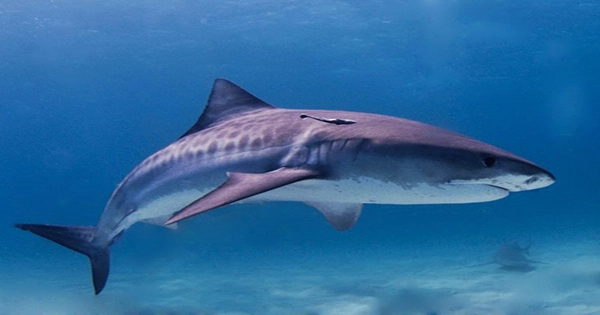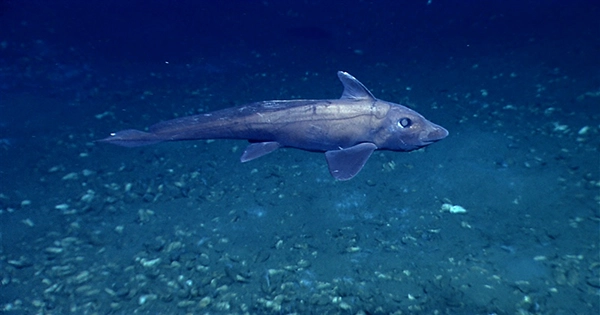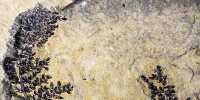Scientists from New Zealand’s National Institute of Water and Atmospheric Research (NIWA) have discovered a rare days-old ghost shark, an ethereal-looking relative of sharks and rays that is rare to encounter free-swimming in the water. Even sightings of the ghost shark, which is found in the deep ocean, are rare, therefore the collection of a newborn is of enormous scientific significance in the study of these unusual species.
The ghost shark starts its life in a capsule deep beneath the ocean’s surface, where it feeds on egg yolk until it hatches. At Chatham Rise, a lucrative fishing location off the coast of New Zealand’s South Island, this specimen was discovered 1,200 meters (4,000 feet) below sea level.

“This ghost shark has a full belly of egg yolk, indicating that it was recently hatched.” It’s very incredible. The majority of deep-water ghost sharks are known adult animals; newborns are rarely documented, therefore we know very little about them,” said Dr. Brit Finucci, a scientist at NIWA Fisheries, in a statement.
Ghost sharks, also known as chimaeras, are cartilaginous fish that exist in temperate waters at depths of 200 meters (660 feet) to 2,600 meters (8,500 feet) and can reach a length of 2 meters (6.56 feet). Due to a lack of solid fossil records and the depths they live in, ghost sharks are poorly understood by experts. They are known for their scarcity and startling white look.
Ecologists will be able to learn more about how these critters start their lives and grow into adults if they can find a neonate. “We know that juveniles and adults can have distinct food and environmental requirements based on better-studied chimaera species.” Juveniles have different color patterns that set them apart from adults. Dr. Finucci stated, “Finding this ghost shark will help us better understand the biology and ecology of this fascinating group of deep-water fish.”
Adult chimaera can grow to be 60-200cm long. Their bodies are long and tapered, and their heads are enormous. Their skin is silky and their color ranges from black to pale blue to brownish grey. They can see in the dark deep sea thanks to their large translucent-green eyes. Their huge eyes, nostrils, and teeth resemble those of a rabbit. As a result, they’ve earned the moniker ‘rabbit fish.’ Rabbitfish is not to be confused with a chimaera species (Chimaera monstrosa). To defend themselves against predators, most species have poisonous spines.















